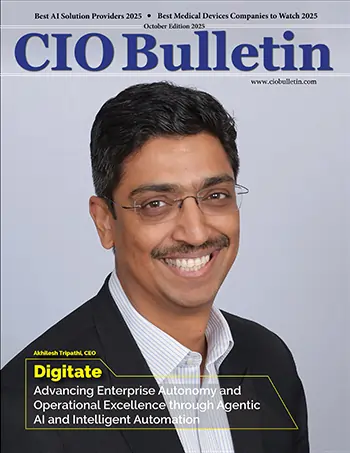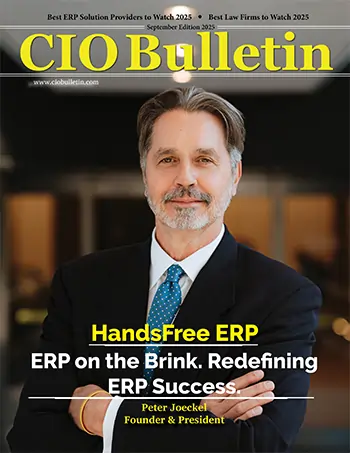CIO Bulletin

Every time we talk about security in the workplace nowadays, two primary forms of security arise quickly at the top of the discussion. One is data and network security. Do your IT personnel know enough to protect your data from prying eyes and hackers? The other is physical security. What are you doing to ensure your employees and property safety? Physical security is the backbone of both types of security.
The modern business owner faces multiple security risks at every turn. As technology advances, security threats can come from all directions, and the importance of physical security has never been greater. While many firms focus their prevention efforts on cybersecurity and hacking, physical threats should not be ignored. Every breach, small or big, impacts your business, from financial losses, to damaged reputation, to you employees feeling insecure at the office. Even for companies, having the correct physical security measures in place can make a massive difference in keeping your business and your data safe.
Safeguarding your perimeters is the first line of defense for your place. Physical security measures are required for tighter security. You can use electric gates, fences, and access control systems like keycards, entry codes, PINs, and alarm systems to protect and control direct entry to your premises.
Physical security is paramount, but most organizations usually overlook it. In the case of natural calamity, it is necessary if you do not want anyone to snatch away your information or destroy it. The reason could be anything, the attacker doing it for financial gain, personal gain, for seeking revenge, or you were the vulnerable target. If this security is not maintained correctly, all the safety measures will be useless once the attacker gains physical access. Physical security is proving to be more challenging than previous decades as more sensitive devices (like laptops, USB drives, smartphones, tablets, etc.) easily steal data quickly and smoothly.
It is up to security companies to balance security controls against risks, considering the costs of specifying, developing, testing, implementing, using, monitoring, managing, and maintaining the controls, along with broader issues such as human rights, aesthetics, health and safety, and societal norms or conventions. Physical access security measures that are appropriate for a high security prison or a military site may be inappropriate in a home, an office, or a vehicle, although the principles are similar.
Kastle Systems is one of the best companies in the market for physical security solutions in commercial and residential spaces. The firm is a leading provider of property technology solutions. Kastle’s solutions protect commercial real estate, multi-family residential, global enterprises, educational institutions, and critical government facilities. Every day, tens of thousands of businesses use Kastle’s state-of-the-art access control, visitor management, video surveillance, and identity management technology solutions to empower a smarter built environment.
Recently CIO Bulletin exclusively spoke to Haniel Lynn, CEO of Kastle Systems, about how it is one of the world’s best providers of physical security solutions. The following excerpts were taken from that conversation.
Q. What is the main advantage of physical security systems for protected facilities?
It’s pretty simple—physical security keeps unauthorized people from entering any space (building, workplace, and apartment) where the inhabitant or user of that space only wants to allow authorized users to have access to enter. Humans have had locks on doors with unique entry keys for centuries. Now we have electronic systems that can sense whether a human seeking entry into a space has the access privileges on their access device signal. Measures such as a proximity card, key fob, smartphone app, or even biometrics prove their authorization to enter. If they do and the electronic reader can decipher the signal, the systems can automatically unlock the door. If not, it remains locked to keep unauthorized users out.
The advantages of electronic systems, in theory, are: that the “key” cannot be lost or copied, requiring changing door lock hardware every time; the access is tied to a unique user identity, so it cannot be shared, and the access records of individual entry activity are available for reference and analysis.
Over time, we have learned that proximity cards and key fobs can also be stolen or copied. Therefore, the best physical security methods currently available are those provided by the more sophisticated digital signals used on mobile access and biometric scan systems.
Q. Why is physical security as necessary as cybersecurity?
First, if your electronic physical security system ties into your on-site network, it is a potential access point to your network and can provide the entry point for cybercriminals despite your cybersecurity system. Many hacks occur through on-site video cameras that can be accessed over the internet using the default manufacturer passwords if never updated after the original installation.
Second, a significant share of cybersecurity breaches is caused by weak physical security procedures. In such scenarios, an unauthorized physical trespasser gains entry to a supposedly secure office or building location where they find nefarious ways to gain network access via the devices sitting on desktops or server rooms.
Third, unauthorized human intruders can cause physical harm to both facility assets and occupants. A fired and disgruntled worker may have instantly lost their online access rights. Nonetheless, suppose administrators haven’t taken their office key, changed the entry door combination code, or deactivated the key fob, they can return to the facility in person and attempt to retaliate with theft, asset destruction, or physical violence—even perhaps cyberattack.
Q. What are the challenges of implementing workplace security?
The biggest challenge in implementing workplace security is enabling systems to be as flexible as the client’s underlying business operations and the ever-changing technologies they adopt in today’s rapidly evolving world.
Businesses must be agile, mobile, and prone to evolution, especially in hybrid work. In this realm, workspaces change in location, shape, purpose, and technology—people inhabiting this space change by occupancy, time periods, and identities. Processes and procedures can change overnight—consider what happened in the pandemic.
Kastle’s open, easy-to-integrate platform can respond with open application architecture to whatever the future brings is an incredible benefit —to our clients and business. Because we design, install, monitor, maintain and manage the client system, we can tailor our systems to serve our clients’ needs as they change continuously.
Q. Why do organizations trust and prefer Kastle over other reputed service providers?
While we are an innovative company with advanced technology, we are not a venture capital-funded startup. We have had fifty years of highly profitable success and have remained at the forefront of cutting-edge technology development. Clients choose Kastle because we are a proven solution and partner to help their business—with superior security and the expertise and experience to push access and video surveillance beyond security to business operations. Our technology makes companies better informed and more efficient, knowing how space is used over time, and integrating with other systems like smart building operations for better real estate and workplace performance.
Additionally, we don’t merely sell systems. We design, install, monitor, and maintain our hardware and software for the long term. Our average client stays with the Kastle service for over a decade because we are a valued partner they count on to help operate their businesses more effectively.
Enabling organizations and businesses to secure their physical resources and safeguard against malicious agents
Haniel J Lynn, the CEO, joined Kastle systems in 2018 with more than 25 years of global operating and executive management experience, growing and scaling enterprises from startup to $1 billion. He has the unique ability to oscillate between high-level vision and tactical execution while inspiring a culture of teamwork.
He spent 16 years at CEB (now Gartner). He served as Group President of its Best Practices & Decision Support business and member of the company’s executive leadership team responsible for product strategy, direction, and operating a $600m business globally.







